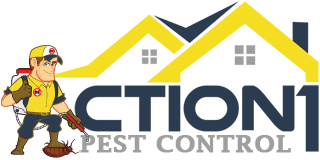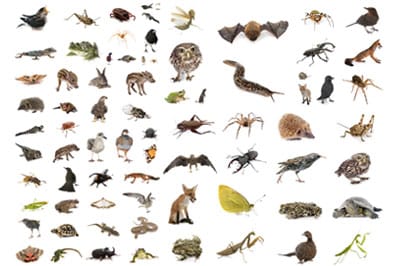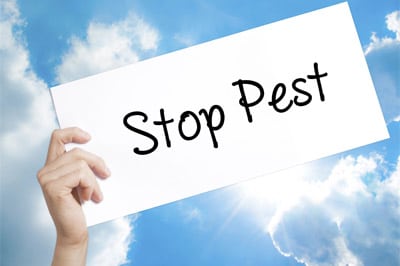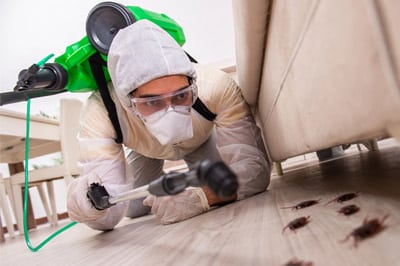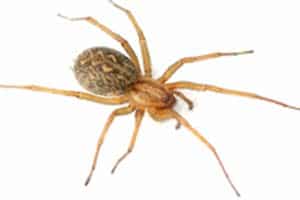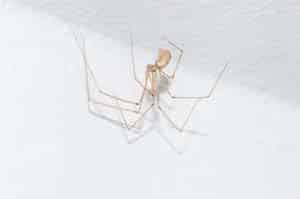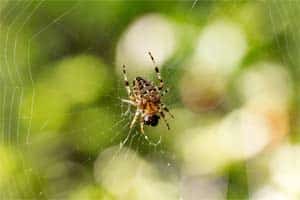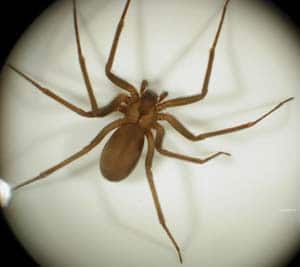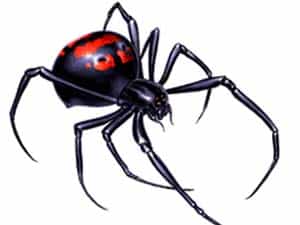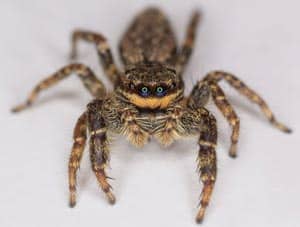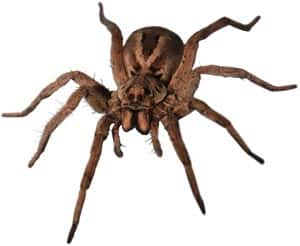Spider Control and Extermination
Call Us Today- Home
- »
- Pest Control
- »
- Spider Exterminator
Spiders in our homes can be more than just an unwelcome surprise – they can pose real health risks and create ongoing stress for homeowners. While most spiders are harmless, dangerous species like black widows and brown recluses require immediate attention and proper identification.
We can effectively eliminate spider infestations using a combination of natural repellents, targeted products, and prevention strategies without relying heavily on toxic chemicals. Understanding which species we’re dealing with and what attracts them to our living spaces forms the foundation of successful spider control.
Whether we choose DIY methods or professional pest management services, the key lies in implementing a comprehensive approach that addresses both current infestations and long-term prevention. We’ll explore proven identification techniques, effective treatment options, and when to call in expert help to keep our homes spider-free.
Highly Trusted Spider Extermination Company

High Quality Services

Affordable & Upfront Pricing

Emergency Same Day Service
Understanding Spiders: Species, Infestations and Control
Spiders are arachnids with eight legs that differ significantly from insects in their body structure and behavior. These creatures enter homes primarily seeking food sources like other insects, shelter from weather conditions, and suitable environments for reproduction.
What are Spiders and Arachnids?
Spiders belong to the class Arachnida, making them arachnids rather than insects. We can identify spiders by their distinctive eight legs and two main body segments.
All arachnids share common characteristics that set them apart from other arthropods. Their bodies consist of a cephalothorax (front section) and an abdomen (rear section).
Most spiders produce silk through specialized glands called spinnerets. This silk serves multiple purposes including web construction, prey capture, and creating egg sacs.
Key arachnid features:
- Eight jointed legs
- No wings or antennae
- Two body segments
- Simple eyes (usually eight)
- Chelicerae (mouthparts with fangs)
We find over 45,000 spider species worldwide. Common household spiders include cellar spiders, house spiders, and wolf spiders.
Difference Between Spiders and Insects
The distinction between spiders and insects is crucial for effective spider control strategies. Insects have six legs while spiders have eight legs.
Spider characteristics:
- 8 legs
- 2 body segments
- No antennae
- No wings
Insect characteristics:
- 6 legs
- 3 body segments (head, thorax, abdomen)
- Antennae present
- Often have wings
Spiders are predators that feed primarily on insects. This predatory behavior means we cannot use the same control methods designed for plant-feeding insects.
Understanding this difference helps us choose appropriate control products. Many insecticides designed for insects may not effectively target spiders due to their different biology and feeding habits.
Why Spiders Enter Homes
Spiders enter our homes for three primary reasons: food availability, shelter, and environmental conditions. The presence of other insects attracts spiders indoors as they follow their food sources.
Common attractants include:
- Flying insects near lights
- Stored product pests
- Moisture-loving insects
- Cluttered areas providing hiding spots
Weather changes drive spiders to seek shelter indoors. Cold temperatures, excessive rain, or drought conditions push spiders toward the stable environment our homes provide.
Poor home maintenance creates entry points through cracks, gaps around windows and doors, and unsealed foundations. We often unknowingly invite spiders by leaving exterior lights on, which attract insects that spiders hunt.
Basements, attics, and storage areas offer undisturbed environments where spiders can establish webs and reproduce.
The Importance of Spider Control
Effective spider control protects our families from potentially dangerous species while managing nuisance populations. Venomous spiders like black widows and brown recluses pose genuine health risks requiring immediate attention.
Most household spiders are harmless but can create unsightly webs and cause anxiety for residents. Large spider populations indicate underlying pest problems since spiders follow their insect prey.
Benefits of spider control:
- Reduced risk of bites
- Elimination of webs and egg sacs
- Prevention of population growth
- Improved home comfort
We achieve better results by addressing both spiders and their food sources. Comprehensive spider control involves identifying species, eliminating attractants, and sealing entry points.
Professional spider control becomes necessary when dealing with venomous species or persistent infestations that resist DIY methods.
Our 5 Step Pest and Spider Control Process

Identifying Common Spider Species
Most spiders found in homes are harmless, but accurate identification helps distinguish between beneficial species and potentially dangerous ones. We can categorize common household spiders into three main groups based on their characteristics and threat levels.
House Spiders and Indoor Types
While house, cellar and orb weaver spiders do have venom, it’s usually not harmful to humans, and bites are generally not a cause for serious concern.
House Spider
Common house spiders are the most frequently encountered indoor species. These small, brownish spiders typically measure 1/4 to 3/8 inches in body length.
We often find them in corners, basements, and other quiet areas where they build irregular webs. Their coloration ranges from yellowish-brown to dark brown with darker markings.
Cellar Spider
Cellar spiders have extremely long, thin legs and small bodies. They create loose, irregular webs in dark spaces like basements and crawl spaces. The Cellar Spider measures about 1/4 inch in body length.
Orb Weaver
Orb weaver spiders occasionally enter homes but prefer outdoor locations. They build circular webs and have rounded abdomens with various color patterns. The orb weaver measures about 1/2-1 inch in body length and can be found near windows.
Venomous Spiders
Both brown recluse and black widow spider bites require immediate medical attention. These venomous spiders are not aggressive but bite when threatened or accidentally contacted.
Professional identification is crucial when dealing with potentially venomous species.
Brown Recluse
Brown recluse spiders are among the most dangerous species in North America. We can identify them by their violin-shaped marking on the cephalothorax and uniform brown coloration.
These venomous spiders measure about 1/4 to 1/2 inch in body length. They prefer dark, undisturbed areas like closets, attics, and storage spaces.
Black Widow
Black widow spiders are easily recognizable by their shiny black bodies and distinctive red hourglass marking on the underside of the abdomen. Females are larger and more dangerous than males.
We find black widow spiders in:
- Garages and sheds
- Woodpiles
- Dark corners
- Outdoor structures
Medical Attention
Both brown recluse and black widow spider bites require immediate medical attention. These venomous spiders are not aggressive but bite when threatened or accidentally contacted.
Professional identification is crucial when dealing with potentially venomous species.
Jumping Spider and Wolf Spider Identification
Neither jumping spiders nor wolf spiders are dangerous to humans. Both species are beneficial predators that help control pest insects around homes.
Wolf spiders may bite if handled, but their venom is not medically significant for most people.
Jumping Spider
Jumping spiders are compact, robust spiders with excellent vision. We can identify them by their large front-facing eyes and stocky build.
These spiders don’t build webs but actively hunt their prey. They measure 1/4 to 3/4 inches and often have colorful markings or iridescent chelicerae.
Wolf Spider
Wolf spiders are larger hunting spiders that can reach up to 1 1/4 inches in body length. They have robust legs and carry their egg sacs attached to their spinnerets.
We recognize wolf spiders by their:
- Dark brown or gray coloration
- Prominent eyes arranged in three rows
- Fast running speed
- Ground-dwelling behavior
Signs and Causes of Spider Infestations
Identifying spider infestations early requires recognizing specific warning signs like web accumulation and egg sacs, while understanding that spiders typically enter homes through small cracks and are drawn by abundant food sources. Their presence often signals broader pest control issues since they follow other insects.
Recognizing a Spider Infestation
Multiple spider sightings indicate a larger population hiding nearby. We typically find active infestations when we spot several spiders within a short timeframe rather than occasional encounters.
Spider webs in corners of ceilings and unused areas signal established populations. Fresh webs appear silvery and intact, while older ones collect dust and debris.
Egg sacs contain up to 200 future spiders each. These small, round or oval structures attach to webs, corners, or hidden spaces and appear white, brown, or yellow depending on the species.
Spider droppings manifest as small black-brown spots on light-colored walls. These resemble tiny paint splatters and can stain surfaces if we don’t clean them quickly.
Increased web density near light sources indicates spiders targeting flying insects. We often discover multiple webs clustered around windows, doorways, and outdoor lighting fixtures.
Attractants and Entry Points
Abundant insect populations create ideal conditions for spider infestations. Spiders follow food sources like flies, moths, beetles, and ants into our homes.
Small cracks and gaps provide primary access routes. We should inspect areas around windows, doors, plumbing penetrations, and damaged roofing systems where spiders commonly enter.
Seasonal factors drive spider activity patterns. Late summer and fall bring increased sightings during mating season, while extreme weather pushes spiders indoors seeking shelter.
Outdoor debris near building perimeters attracts spiders. Firewood piles, mulch, leaf accumulations, and storage items within three feet of structures create stepping stones for indoor migration.
Moisture sources draw spiders to basements, crawl spaces, and humid areas. We find higher concentrations in locations with water leaks, poor ventilation, or standing water.
Spiders as Indicators of Other Pests
Spider presence signals broader pest issues requiring comprehensive pest control approaches. We rarely see spider infestations without underlying insect problems.
Flying insect populations directly correlate with spider activity. Heavy spider concentrations near lights and windows indicate moth, fly, or gnat infestations that need addressing.
Ground-dwelling insects like ants attract hunting spiders that don’t build webs. We often discover both ant trails and spider activity in the same areas.
Multiple pest species create complex ecosystems within our homes. Effective spider control requires eliminating their food sources, including fleas, beetles, and other small insects.
Integrated management addresses root causes rather than individual species. We achieve better long-term results by treating entire pest populations simultaneously rather than targeting spiders alone.
How to Get Rid of Spiders
Effective spider elimination combines immediate removal techniques with long-term prevention strategies. We focus on direct treatment methods, protective measures, and proper cleanup procedures to achieve lasting control.
DIY Spider Elimination Methods
Insecticide Treatment forms the foundation of effective spider control. We recommend using concentrated insecticides applied with hand pump sprayers for maximum coverage and residual protection.
Apply treatments to all baseboards, door frames, window frames, and areas under appliances. Focus on closets, storage rooms, and entry points where utilities enter the structure.
Contact Sprays provide immediate results when direct elimination is needed. Pyrethrin-based aerosol sprays offer instant knockdown for visible spiders, though they lack long-term residual effects.
Glue Boards serve dual purposes in spider elimination programs. Place them in cabinets, closets, under appliances, and storage areas like attics or basements.
These monitoring tools capture existing spiders while providing insight into activity levels. Check boards regularly and replace when full or every 30 days.
Exterior Perimeter Treatment prevents new infestations. Spray one foot up the foundation and one foot out onto adjacent ground using concentrated insecticides.
Preventive Measures for Spider Control
Entry Point Sealing eliminates access routes into your home. We seal cracks around windows, doors, and foundation areas where spiders typically enter.
Pay special attention to areas where cables, pipes, or wires penetrate the structure. Use caulk or expanding foam to close these gaps permanently.
Food Source Elimination removes the primary attraction for spiders. Since spiders feed on insects, controlling other pest populations significantly reduces spider interest in your property.
Regular insecticide applications target both spiders and their prey species. This dual approach creates an environment less hospitable to spider populations.
Cleanliness and Decluttering removes hiding spots that spiders prefer. We maintain clean, organized spaces that offer fewer harborage opportunities.
Focus on storage areas, basements, and closets where clutter typically accumulates. Regular cleaning disrupts spider establishment and makes detection easier.
Safe Web and Egg Removal
Web Destruction should occur immediately upon discovery. We knock down spider webs on both interior and exterior surfaces as soon as they appear.
Regular web removal discourages spiders from establishing territories in treated areas. Use a long-handled brush or vacuum attachment for safe removal.
Egg Sac Elimination prevents future generations from developing. Spider egg sacs appear as small, round or oval silk bundles attached to webs or hidden surfaces.
Remove egg sacs carefully using gloved hands or tools. Dispose of them in sealed bags to prevent accidental hatching during removal.
Vacuum Collection provides safe spider removal without direct contact. Use crevice tools to reach into corners and tight spaces where spiders hide.
Empty vacuum bags immediately after use and dispose of contents in sealed containers. This prevents captured spiders from escaping back into living areas.
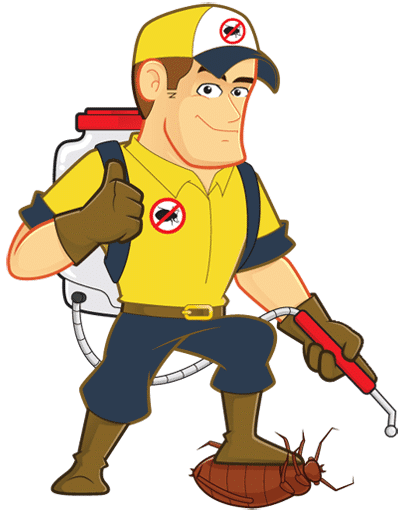
Why Hire Our Team
Our professional spider control becomes necessary when infestations exceed what homeowners can manage independently. Our trained specialists use targeted methods to identify spider species and eliminate them at their source through comprehensive treatment plans.
When to Call Our Spider Control Specialists
Certain situations require immediate professional intervention rather than DIY approaches. Multiple spider sightings throughout your home indicate an established population that needs expert attention.
Venomous species like black widows or brown recluses demand professional handling. We cannot safely identify or remove these dangerous spiders without proper training and equipment.
Large webs in multiple locations signal extensive infestations. When spiders appear faster than you can remove them, the problem has grown beyond basic control measures.
Recurring infestations despite your efforts indicate underlying issues. Our techs address root causes that attract spiders rather than treating symptoms alone.
Businesses face unique challenges with spider control. Commercial properties require specialized approaches that maintain operations while eliminating pests effectively.
What to Expect from Our Pest Control Services
Our spider control begins with thorough property inspection. Our technicians identify spider species, locate nesting areas, and assess infestation severity before developing treatment plans.
Customized treatment approaches target specific spider types in your home. Different species require different methods for effective elimination and long-term prevention.
Initial treatments focus on active infestations using targeted applications. We apply treatments to cracks, crevices, and areas where spiders hide and breed.
Follow-up visits ensure treatment effectiveness and address any remaining issues. Our services include monitoring periods to verify complete elimination.
Prevention recommendations accompany treatment services. Our technicians seal entry points, remove attractants, and provide maintenance guidance to prevent future infestations.
We Do Provide an Integrated Pest Management (IPM) Approach
Modern pest control services use IPM strategies that combine multiple control methods. This approach reduces reliance on chemical treatments while maximizing effectiveness. Call us to schedule an appointment with our trained local teams to learn more about our IPM strategies and find out if it is the right solution for you.
